Data validation is essential for B2B data selling companies to improve the quality of their datasets. Data validation techniques like automated checks, manual verification, data profiling, and third-party validation ensure accuracy, consistency, and reliability of sellable B2B data.
Contents
- Why do B2B datasets need regular validation?
- What are the benefits of data validation to B2B data vendors?
- Data validation techniques that improve the quality of your b2b database
- How to validate B2B data fields that need regular validation?
- What are some commonly used tools for data validation?
- What are some data validation best practices?
- Future of B2B data validation
- Conclusion
Which data validation techniques you use, and how you use them to improve data quality, determines the market value of your data. Poor B2B data quality leads to missed opportunities, wasted resources, and unsuccessful marketing campaigns. SalesIntel found that low-quality data can cost businesses 550 hours and up to $32,000 per sales rep per year. Thus, businesses cannot afford to trust data of uncertain quality. And they cannot afford to trust any B2B data seller who doesn’t maintain diligent data validation practices.
It is natural for raw data and data sourced from varied origins to be of poor quality and in a mess. By implementing robust validation processes, B2B data selling companies identify and rectify all errors and inconsistencies in such data. And they offer it to their customers only after verifying the data’s completeness, accuracy, consistency, and integrity.
But data validation is not a one-off process. For B2B data sellers, data validation becomes an organizational habit ensuring product excellence. As high-quality data is their main product.
Why do B2B datasets need regular validation?
Regular validation of B2B datasets is crucial to ensure data accuracy and reliability. It helps improve targeted marketing and maximizes business opportunities. Without regular validation it is common to find datasets suffering from:
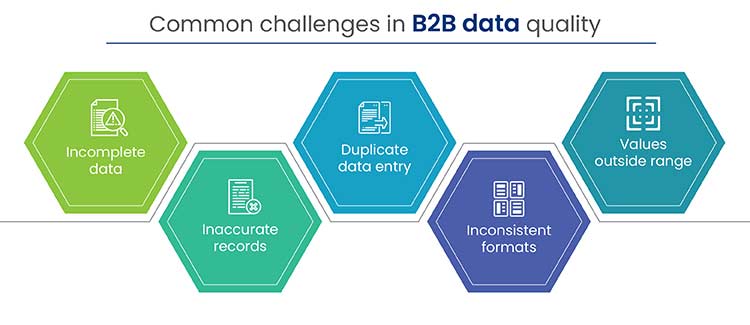
Incomplete or missing information: Regular validation identifies gaps in the dataset, ensuring comprehensive and accurate data for decision-making.
Inaccurate or outdated data: Validation helps update outdated information, maintaining data relevance in a constantly changing business landscape.
Duplicate entries: Regular validation detects and removes duplicate entries, preventing wasted resources and skewed analysis results.
Inconsistencies and formatting issues: Validation addresses inconsistencies and formatting problems, ensuring data compatibility and accuracy.
Range violations: Regular validation checks for values outside the expected range, ensuring data validity and integrity for better decision-making.
Are you making critical decisions based on unreliable B2B data?
Contact our validation experts today »What are the benefits of data validation to B2B data vendors?
For B2B data selling companies, data validation benefits include increased customer satisfaction, higher data accuracy, reduced data-related issues, enhanced reputation, and increased sales opportunities through reliable, high-quality data offerings.
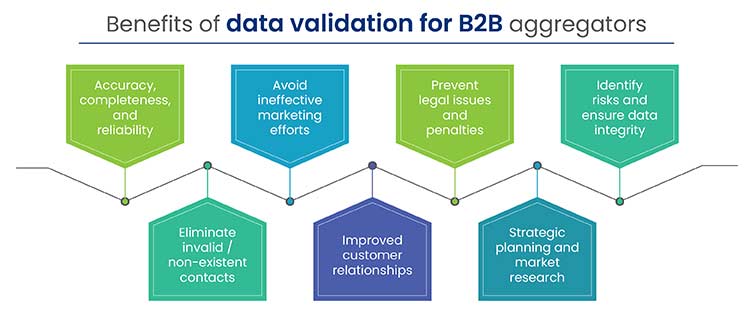
Data quality: Ensures the accuracy, completeness, and reliability of the data.
Lead generation: Identifies and eliminates invalid or non-existent contacts.
Cost savings: Reduces costs associated with ineffective marketing efforts.
Customer satisfaction: Personalized interactions for improved customer relationships.
Regulatory compliance: Avoiding legal issues, penalties, and damage to reputation.
Decision-making: Strategic planning, market research, and business opportunities.
Data security: Identifying potential risks and ensuring data integrity and confidentiality.
Data validation techniques that improve the quality of your b2b database
Data validation is the process of ensuring that the data collected, stored, or processed is accurate, consistent, and reliable. Various techniques can be used for data validation, depending on the type of data and the desired level of validation. Some common data validation techniques include:
Rule-based validation: Applying a predefined set of rules or criteria to check the data for accuracy, consistency, and proper formatting. Examples of rules include format rules, range rules, consistency rules, and lookup rules.
Constraint-based validation: Enforcing data constraints, such as unique keys, foreign keys, or check constraints, to ensure data integrity and consistency within a database.
Pattern matching: Using regular expressions or pattern matching algorithms to validate data that follows a specific pattern, such as email addresses, phone numbers, or dates.
Cross-field validation: Comparing related data fields to ensure consistency and accuracy, such as verifying that of a customer’s city and postal code match.
Lookup validation: Checking data against a predefined list of acceptable values, such as a list of countries, product codes, or payment methods.
Data type validation: Ensuring that the data entered is of the correct data type, such as text, numbers, dates, or boolean values.
Range validation: Verifying that numerical or date values fall within a specified range or limit, such as age, salary, or order quantity.
Referential integrity validation: Ensuring that relationships between data tables in a database are maintained, such as verifying that a foreign key value in one table has a corresponding primary key value in another table.
Data consistency validation: Checking for discrepancies or inconsistencies in data across multiple sources or records, such as duplicate entries or missing data.
Data enrichment: Using external data sources, such as professional databases, industry reports, or financial filings, to enrich and validate the data in your database. This can help confirm the accuracy of the data and update any outdated or incorrect information.
Manual validation: Reviewing and verifying data manually, often through visual inspection or direct communication with the data source. This method can be time-consuming and prone to human error but may be necessary in some cases where automated validation techniques are not feasible or sufficient.
By using a combination of these data validation techniques, organizations can maintain the quality and integrity of their data, leading to more accurate and reliable insights, better decision-making, and improved operational efficiency.
Want to implement these data validation techniques?
Contact our data experts today »How to validate B2B data fields that need regular validation?
Implement processes like automated checks, manual verification, and third-party data sources to validate data fields that need regular validation. This ensures accuracy, consistency, and integrity of the information. Here’s how we can validate data fields like customer names, email IDs, contact numbers, company profiles and many more.
A. Validating customer names and salutations
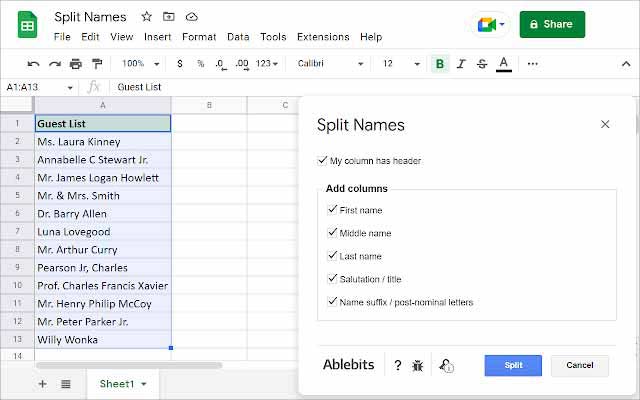
It is essential for maintaining accurate data and ensuring personalized communication. Here are some steps to validate customer names and salutations:
- Standardization: Names and salutations should be consistently formatted. For example, use proper capitalization, remove extra spaces, and standardize any abbreviations (e.g., Mr., Mrs., Dr.).
- Name validation: Check for obvious errors like missing characters, numbers, or special characters that should not be present in names. Ensure that the first and last names are correctly separated and formatted.
- Salutation validation: Verify that the salutation is appropriate for the customer’s name and gender (if available). Common salutations include Mr., Mrs., Ms., Dr., and Prof. Ensure that the salutation is spelled correctly and consistently.
- Gender inference: For customer records, where gender information is not available, using a gender inference tool or library like Genderize.io or gender-guesser to predict the gender based on the customer’s first name is a smart move. This way you can choose the appropriate salutation for the customer and eliminate records with incorrect or missing salutations.
- Duplicate detection: Identify and remove any duplicate records from the database that occur due to data entry errors, system glitches, or merging of records. Using macros or custom tools to compare records based on first name, last name, and other identifying information can help in detecting potential duplicates.
- Data enrichment: Using external data sources like social media profiles, professional databases, or public records to cross-reference and validate the customer names and salutations proves beneficial. This not only helps you confirm the accuracy of the customer information, but also helps you to update outdated or incorrect data points – if any.
- Regular updates: Establish a process for regularly updating and maintaining the customer names and salutations in your database. This may involve periodic reviews, automated data validation checks, or integrating your database with external data sources to keep the information current.
These steps can improve the accuracy and reliability of your customer names and salutations, ensuring personalized and effective communication with your customers.
Are you facing problem in maintaining B2B database quality?
Know more about 8 ultimate data cleansing tips »B. Validating customer mobile numbers
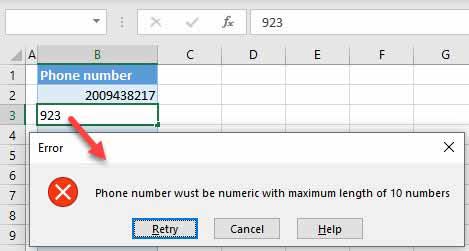
It is essential to maintain accurate data and ensure effective communication. Here’s how we, at HabileData, validate customer mobile numbers:
- Consistent formatting: Ensure that mobile numbers are consistently formatted and use the same units of measurement, such as country codes, area codes, and local numbers.
- Format: Check if the mobile number follows the standard format for the specific country, including the country code, area code, and local number. Remove any unnecessary characters, such as spaces, dashes, or parentheses.
- Length: Ensure that the mobile number has the correct number of digits for the given country. The length of mobile numbers may vary by country, so it’s essential to use the correct format for each location.
- Country code: Verify that the country code is accurate and corresponds to the customer’s location. Use the standard international dialing format, such as +1 for the United States or +44 for the United Kingdom.
- Mobile number validation: Use a mobile number validation tool or API to confirm the validity of the mobile number. These tools can help you identify any errors in the mobile number format, check for valid area codes, and ensure that the number is not a landline or a known invalid number. Some popular mobile number validation tools and APIs include Google’s libphonenumber library, Twilio Lookup API, and NumVerify API.
- Duplicate detection: Identify and remove any duplicate records in the database. Duplicates can occur due to data entry errors, system glitches, or merging of records. Compare records based on mobile numbers and other identifying information to detect potential duplicates.
- Regular updates: stablish a process for regularly updating and maintaining the customer mobile numbers in your database. This may involve periodic reviews, automated data validation checks, or integrating your database with external data sources to keep the information current.
Leveraging these steps to validate customer mobile numbers, we improve the accuracy and reliability of client’s B2B database. It ensures effective communication with their customers and reduces the risk of undelivered messages or calls.
C. Validating email IDs
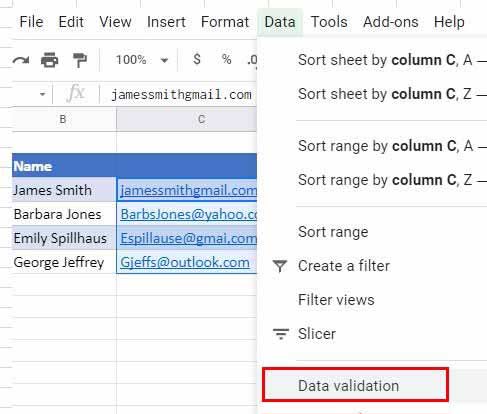
Deliverable email addresses are the backbone for any B2B datasets. If the emails Ids are incomplete, invalid or the domain they are registered with is not working; the entire dataset could prove to be a big disaster. Here we have listed several steps that we follow to validate email IDs in our client’s B2B datasets:
Syntax validation: Check if the email address follows the standard format of username@domain.extension`.The email address should have:
- A local part (username) followed by the ‘@’ symbol.
- A domain name followed by a dot (‘.’).
- A top-level domain (extension) like .com, .org, .net, etc.
Special characters and length: Ensure that the email address contains only valid characters and adheres to the appropriate length constraints:
- Local part (username) can contain alphanumeric characters, periods, hyphens, and underscores.
- Domain name can contain alphanumeric characters, hyphens, and periods.
- The top-level domain (extension) should be at least two characters long.
Domain validation: Verify that the domain name in the email address exists and has a valid DNS – Domain Name System record, such as an MX – Mail Exchange record. This step confirms that the domain can receive emails.
Disposable email address detection: Check if the email address belongs to a temporary or disposable email service. These services often provide short-term, throwaway email addresses that may not be suitable for long-term communication or marketing purposes.
Role-based email address detection: Identify if the email address is a role-based account, such as admin@example.com or support@example.com. These addresses may not be suitable for personalized communication or marketing campaigns.
Email verification: Use an email verification service or API to confirm the deliverability of the email address. These services typically perform a “ping” to the email server without sending an actual email, checking if the mailbox exists and can receive emails. Some popular email validation tools and APIs include:
- ZeroBounce
- NeverBounce
- Hunter
- EmailValidator
While these email ID validation is helpful, no method is foolproof. It’s essential to maintain a clean and up-to-date email list by regularly removing bounced or inactive email addresses and allowing users to unsubscribe or update their email preferences.
D. Validating postal addresses
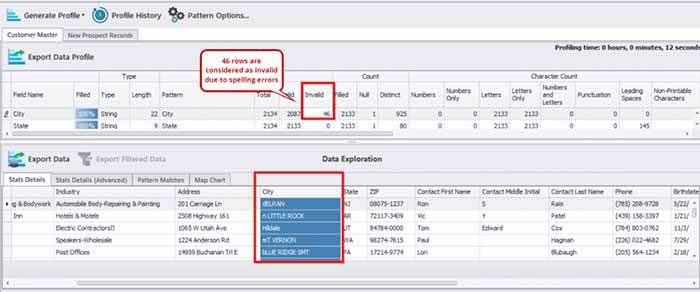
For various purposes, such as shipping, billing, and geolocation it is essential that the postal addresses in the customer database are accurate and standardized. We customize the address validation rules depending on the country and its postal system. However, here are some common rules that we apply to validate addresses:
- Parsing: Break down the address into its components, such as street number, street name, city, state or province, postal code, and country.
- Standardization: Ensure that the address components follow the standard format for the specific country. This may include using abbreviations, capitalization, and punctuation as required.
- Postal code validation: Verify that the postal code is valid for the given country and matches the city and state or province. Postal code formats vary by country, so it’s essential to use the correct format for each location.
- Address range: Check if the street number falls within the valid range for the given street. Some address validation tools may provide this information.
- Street name: Confirm that the street name exists in the given city and is spelled correctly.
- City, state/province: City, State/Province: Ensure that the city and state or province are valid and correctly spelled. In some cases, you may need to verify that the city and state or province combination is accurate.
- Country: Validate that the country is recognized and correctly spelled. Use the standard two-letter country code (ISO 3166-1 alpha-2) when possible.
- Address type: Determine if the address is a residential or commercial address. This information may be useful for shipping or marketing purposes.
- Geocoding: Convert the address into geographic coordinates (latitude and longitude) to verify its location and ensure it exists.
One can use address validation APIs or services, such as Google Maps API, SmartyStreets, or Melissa Data to validate and standardize addresses more efficiently and accurately. However, address validation rules may vary depending on the country, so it’s essential to use custom tools or data validation service that support the specific countries you’re working with.
E. Validating details of decision-making authorities
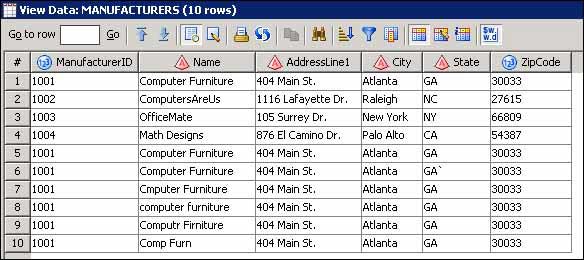
Of the 5,000+ projects that HabileData has successfully delivered, projects of validating information of decision makers are the most sensitive ones. A company’s database containing the first name, last name, and positions of individuals with decision-making authority is essential to ensure accurate and up-to-date information. Here are some steps to validate this data:
- Standardization: Ensure that the first name, last name, and positions of individuals are formatted consistently. For example, use proper capitalization, remove extra spaces, and standardize any abbreviations.
- Name validation: Check for any obvious errors in the first and last names, such as missing characters, numbers, or special characters that should not be present in names.
- Position validation: Verify that the positions listed are relevant to decision-making authority within the company. Common decision-making positions include CEO, CFO, CTO, COO, President, Vice President, Director, and Manager. Ensure that the position titles are spelled correctly and consistently.
- Duplicate detection: Identify and remove any duplicate records in the database. Duplicates can occur due to data entry errors, system glitches, or merging of records. Compare records based on first name, last name, and position to detect potential duplicates.
- Data enrichment: Use external data sources, such as LinkedIn, company websites, or professional databases, to cross-reference and validate the information in your database. This can help you confirm the accuracy of the names and positions and update any outdated or incorrect information.
- Data verification: Reach out to the individuals or the company directly to verify the information, if possible. This can be done through email, phone calls, or in-person meetings. Keep in mind that this step may not always be feasible or appropriate, depending on the size of your database and the nature of your relationship with the company.
- Regular updates: Establish a process for regularly updating and maintaining the database. This may involve periodic reviews, automated data validation checks, or integrating your database with external data sources to keep the information current.
By following these steps, we improve the accuracy and reliability of your company database, ensuring that you have up-to-date information on key decision-makers within the organizations you’re working with.
Don’t let inaccurate data hinder your business growth.
Connect with our experts today »What are some commonly used tools for data validation?
1. Top 5 proprietary tools for data validation
Informatica Data Quality: Offers proactive data cleansing, fast data profiling, standardized data quality, and prebuilt rules and accelerators for improved decision-making.
IBM InfoSphere QualityStage: Provides pre-built modules and operations for data quality improvement, such as cleansing, deduplication, and normalization.
Talend Data Quality: A comprehensive solution for data profiling, cleansing, and enrichment, ensuring accurate and reliable data for various use cases.
SAP Data Services: Delivers data integration, transformation, and quality management capabilities, enabling businesses to access, transform, and improve data quality.
Microsoft SQL Server Data Quality Services (DQS): A knowledge-driven data quality solution that helps organizations cleanse, match, and standardize data for better decision-making.
2. Custom tools Vs Proprietary tools for data validation
| Features | Custom data validation tools | Proprietary data validation tools |
| Flexibility | Tailored to specific business needs | Proprietary tools have limited customization options |
| Integration | Seamless integration into existing processes | Proprietary tools require additional setup and configuration |
| Cost | Cost-effective as they are designed to meet specific requirements | Proprietary tools may have additional costs for unused features |
| Scalability | Easily scalable to handle large datasets | Limitations in handling data volumes and data types |
| Support | Tool providers offer dedicated support | Generic support for all users |
| Updates | Tools can be updated as per business requirements | Proprietary tools have fixed update schedules |
| Data Quality and Quantity | Tools can be designed to ensure data quality and quantity | Results of proprietary tools may vary in their data quality |
| Ease of Use | These tools can be designed with user-friendliness in mind | Proprietary tools may have a steeper learning curve |
| Data Sources | Tool can be tailored to validate data from specific sources | Proprietary tools are programmed to validate data from set of sources |
| Ownership | Tools offer full ownership and control | Proprietary tools may have licensing restrictions and limitations |
3. Cost effectiveness, scalability, and personalization of custom tools
Using custom B2B data validation tools offer a wide range of benefits, apart from efficiency, accuracy, and the overall effectiveness of data validation processes, ultimately leading to better decision-making and improved business outcomes.
Cost-effectiveness: Automated data validation reduces manual labor costs and improves sales and marketing efficiency, generating higher returns on investment
Scalability: Custom tools can handle large datasets, ensuring data quality across the entire organization, even as the business grows
Personalization: Custom validation tools can be tailored to specific business needs, ensuring accurate and relevant data for targeted marketing campaigns.
Improved decision-making: Validated data enhances decision-making processes, leading to better business strategies and outcomes.
Reduced bounce rates: Data validation services help reduce bounce rates by verifying contact information, improving the global footprint of a company.
What are some data validation best practices?
For B2B data selling companies, data validation best practices include setting clear data quality goals, employing multiple validation techniques, automating processes, maintaining documentation, and regularly reviewing and updating validation rules to ensure ongoing accuracy and consistency.
- Establishing data validation standards and protocols – It involves defining and documenting data quality standards, implementing data validation rules and processes, and maintaining organized standards for efficient data management. It ensures data integrity, accuracy, and reliability,
- Regular data quality checks and maintenance – It is a is a vital B2B data validation best practice involving continuously monitoring data quality metrics, investigating, and resolving data quality failures, addressing data gaps and inconsistencies, and ensuring data completeness and reliability.
- Collaborating with data providers and stakeholders – It involves engaging with data providers to ensure data quality, involving stakeholders in data governance councils, aligning priorities, messaging, and branding, and resolving data quality issues collaboratively.
- Documenting validation processes for future reference – It facilitates knowledge sharing, efficient data management, and continuous improvement in data quality. It includes activities like defining and recording data quality standards, establishing a data governance framework, detailing data validation rules and processes.
Are you failing to reach your prospects due to dirty listing data?
Check out 8 data hygiene best practices »Future of B2B data validation
Here are the trends that will drive the development of innovative data validation tools and techniques, ensuring data accuracy and reliability for businesses:
Data privacy regulations: GDPR and CCPA will impact how businesses collect, store, and validate data, requiring stricter compliance measures.
AI and machine learning advancements: B2B data validation processes will become more efficient, accurate, and capable of handling complex data sets.
Data integration: The ability to seamlessly integrate data from various sources and formats will be crucial for effective B2B data validation which will increase the demand for robust integration solutions.
Data quality: Businesses will depend on data-driven decision-making driving the need for advanced data validation techniques.
Industry-specific requirements: Different industries with unique data validation needs will drive the development of customized data validation solutions and specialized validation tools.
Cloud-based solutions: Cloud-based services will influence the future of B2B data validation, offering scalable, flexible, and cost-effective solutions for businesses.
Real-time validation: The demand for real-time data validation will increase as businesses seek to make faster, more informed decisions based on up-to-date information.
Collaboration and standardization: Cross-industry collaboration and the development of standardized data validation frameworks will help streamline processes and improve overall data quality.
Conclusion
Which data validation technique is used to improve the quality of your B2B dataset is of paramount importance for B2B data selling companies. By defining and documenting data quality standards and implementing data validation rules and processes B2B datasets can be made accurate and reliable. Improved B2B data quality will lead to better understanding of customers, an increase in saleable data, and hence profitable business growth.
As the future of B2B data validation evolves with advancements in AI, machine learning, and data privacy regulations, it is crucial for businesses to adopt best practices and stay ahead of the curve. By prioritizing data quality, B2B data selling companies can gain a competitive advantage. And this is why a renewed focus on data validation is the need of the hour.
Are you looking to improve the quality of your B2B data?
Consult our B2B data validation experts – Now »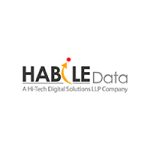
HabileData is a global provider of data management and business process outsourcing solutions, empowering enterprises with over 25 years of industry expertise. Alongside our core offerings - data processing, digitization, and document management - we’re at the forefront of AI enablement services. We support machine learning initiatives through high-quality data annotation, image labeling, and data aggregation, ensuring AI models are trained with precision and scale. From real estate and ITES to retail and Ecommerce, our content reflects real-world knowledge gained from delivering scalable, human-in-the-loop data services to clients worldwide.






